Classic Works of Art: the Most Famous Paintings in History
- Jan van Eyck, “The Arnolfini Portrait” (1434)
- Sandro Botticelli, “The Birth of Venus” (1484–1486)
- Hieronymus Bosch, “The Garden of Earthly Delights” (1503–1515)
- Michelangelo Buonarroti, “The Creation of Adam” (1511-1512)
- Leonardo Da Vinci, “Mona Lisa” (1503)
- Pieter Bruegel the Elder, “The Harvesters” (1565)
- Diego Rodríguez de Silva y Velázquez, “Las Meninas, or The Family of King Philip IV” (1656)
- Johannes Vermeer, “Girl with a Pearl Earring” (1665)
- Francisco de Goya y Lucientes, “The Naked Maja” (1797–1800)
- Jean Auguste Dominique Ingres, “Grande Odalisque” (1814)
- Théodore Géricault, “The Raft of the Medusa” (1818–1819)
- Caspar David Friedrich, “Wanderer above the Sea of Fog” (1819)
- Eugène Delacroix, “Liberty Leading the People” (1830)
- Édouard Manet, “Le Déjeuner sur l’herbe” (1863)
- James Abbott McNeill Whistler, “Arrangement in Grey and Black No. 1” (1871)
- Claude Monet, “Impression, Sunrise” (1874)
- Georges Seurat, “A Sunday Afternoon on the Island of La Grande Jatte” (1884–1886)
- Vincent van Gogh, “The Starry Night” (1889)
- Edvard Munch, “The Scream” (1893)
- Pablo Picasso, “Les Demoiselles d’Avignon” (1907)
- Gustav Klimt, “The Kiss” (1907–1908)
- Marcel Duchamp, “Nude Descending a Staircase, No. 2” (1912)
- Piet Mondrian, “Composition with Red Blue and Yellow” (1930)
- Pablo Picasso, “Guernica” (1937)
- Edward Hopper, “Nighthawks” (1942)
Despite the advent of photography, film, and digital technology, painting endures as a longstanding form of expression with roots in antiquity. Countless paintings spanning millennia exist, yet only a modest fraction can be considered "timeless classics" that are widely recognized by the public. Notably, many of these enduring masterpieces are the creations of some of history's most renowned artists.
Some of the most famous paintings in the world have become true symbols of art. For example, one of them depicts the moment of the mysterious sunrise, playing with colors in the sky and leaving viewers impressed by its energy and grandeur. Another painting captivates with its intimacy, serving as an indicator of deep emotions that art can evoke. These works transcend linguistic and cultural barriers, telling unique stories and leaving unforgettable impressions on each viewer.
The determination of the top most famous paintings in the world is based on a series of key criteria. Firstly, historical significance plays a pivotal role, as paintings that stand out in global art history or become symbols of specific epochs deserve special attention. The second criterion is artistic influence, assessing the impact of a painting on the development of various artistic styles and movements. The third aspect is aesthetic value, considering the quality and visual appeal of the artwork in the context of art. Global popularity among viewers and experts, the representativeness of the artist, the unfolding history, and cultural influence are also crucial aspects in defining the top paintings.
Here is our own TOP-25 of the most well-known artworks in history. Find out how many pieces of art you already know by scrolling down!
-
Jan van Eyck, “The Arnolfini Portrait” (1434)

Jan Van Eyck, “the Arnolfini Portrait” (1434)
This painting is a refined masterpiece of early Flemish art. Captured on canvas during the Northern Renaissance, this portrait impresses with its meticulous detail and realism. Van Eyck skillfully employs light and shadow to reproduce various textures, including the rich carpet, the wedding gown, and the patterns on the wall. The portrait of the Arnolfini couple interacts within the space, creating an impression of intimacy and grandeur. This sophisticated work expresses the significance of art as a means of reflecting and reproducing the multifaceted reality. What is more, this artwork is considered one of the earliest paintings created using oil as a medium. Presenting a full-length double portrait, it is said to depict an Italian merchant alongside a woman, possibly his bride. In 1934, the renowned art historian Erwin Panofsky suggested an intriguing interpretation, proposing that the painting serves as a representation of a wedding contract.
-
Sandro Botticelli, “The Birth of Venus” (1484–1486)

Sandro Botticelli, “the Birth Of Venus” (1484–1486)
Sandro Botticelli's painting stands as an iconic masterpiece of the Italian Renaissance, depicting the goddess Venus emerging from the sea. Commissioned for Lorenzo de Medici, the painting supposedly features Simonetta Cattaneo Vespucci as the model for the Goddess of Love, her affections rumored to be shared by Lorenzo and his younger brother, Giuliano. In this ethereal scene, Venus is gently blown ashore on an immense clamshell by the wind deities Zephyrus and Aura, while the embodiment of spring eagerly anticipates her arrival on land with a cloak. Predictably, the enchanting Venus provoked the disapproval of Savonarola, the Dominican monk leading a fervent crackdown on Florentine secular tastes. His infamous "Bonfire of the Vanities" in 1497 witnessed the burning of "profane" items (cosmetics, artworks, books), on a pyre, with "The Birth of Venus" slated for incineration but miraculously spared. Despite the painting's preservation, the traumatic event led Botticelli to temporarily abandon his artistic pursuits.
-
Hieronymus Bosch, “The Garden of Earthly Delights” (1503–1515)
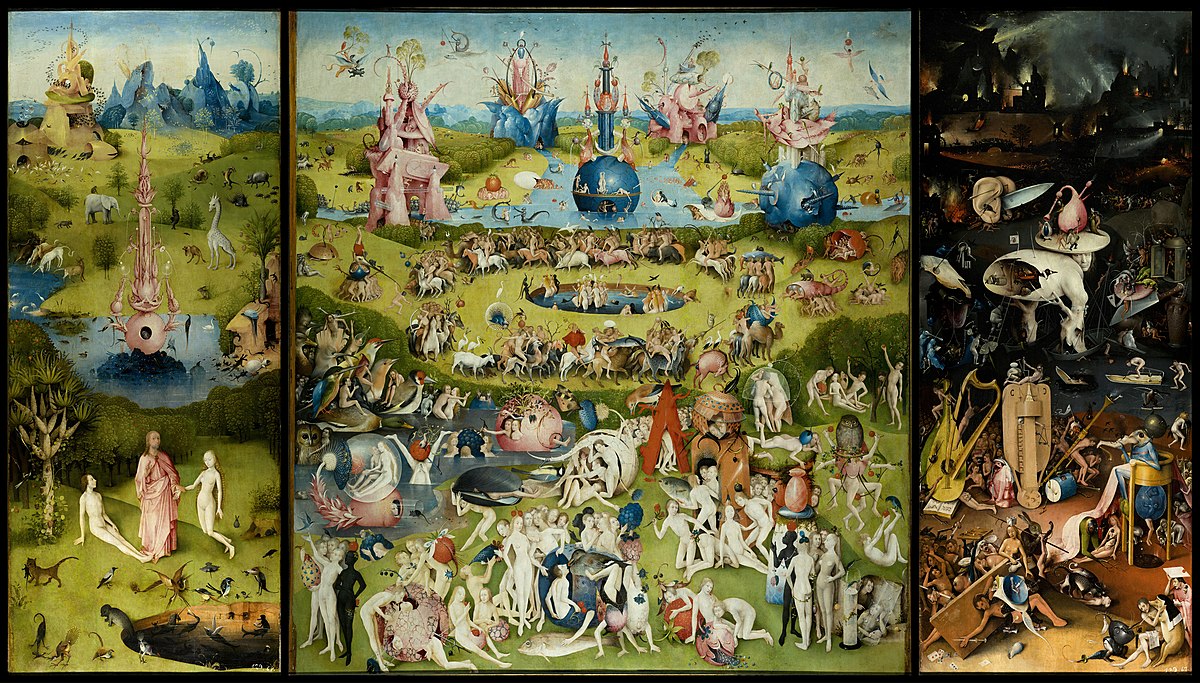
Hieronymus Bosch, “The Garden Of Earthly Delights” (1503–1515)
The mysterious and captivating work of art by Hieronymus Bosch never fails to enthrall art lovers and academics alike. Bosch's skill at blending the supernatural and the macabre is what makes this piece of art so intriguing. The intricate details and symbolism within each scene invite viewers to delve into the complex layers of meaning, sparking endless interpretations. Bosch's unique vision challenges conventional artistic norms of his time, leaving a lasting impact on the history of art. “The Garden of Earthly Delights” serves as a testament to Bosch's mastery in creating a visual feast that not only intrigues the mind but also sparks conversations about morality, temptation, and the complexities of human nature. As viewers explore the myriad creatures, surreal landscapes, and symbolic elements, they embark on a journey through Bosch's rich and mysterious artistic landscape, where the boundaries between reality and imagination blur in an enthralling dance of color and form.
-
Michelangelo Buonarroti, “The Creation of Adam” (1511-1512)
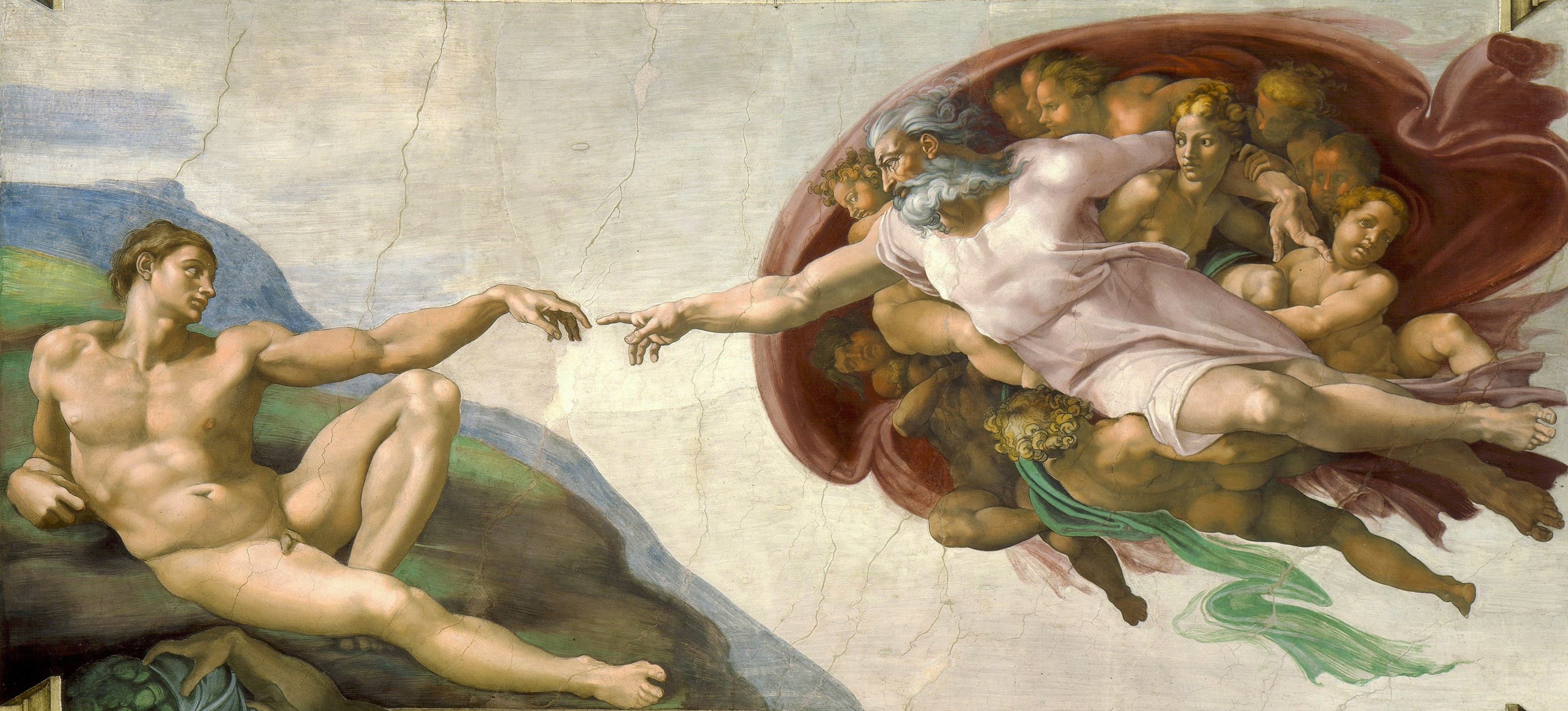
Michelangelo Buonarroti, “The Creation Of Adam” (1511-1512)
This iconic masterpiece stands as a testament to the extraordinary talent of the Renaissance artist. Regarded as a pinnacle of High Renaissance art, this iconic fresco resides on the ceiling of the Sistine Chapel in Vatican City. The central scene captures the divine moment when God, with outstretched finger, imparts life to Adam, conveying the profound connection between the Creator and His creation. The surrounding panels intricately portray celestial and earthly elements, echoing Michelangelo's profound belief in the interconnectedness of the spiritual and material realms. Despite the centuries that have passed since its creation, the symbolism within "The Creation of Adam" continues to captivate viewers, inviting them to explore the intricate layers of meaning embedded in this timeless masterpiece.
-
Leonardo Da Vinci, “Mona Lisa” (1503)
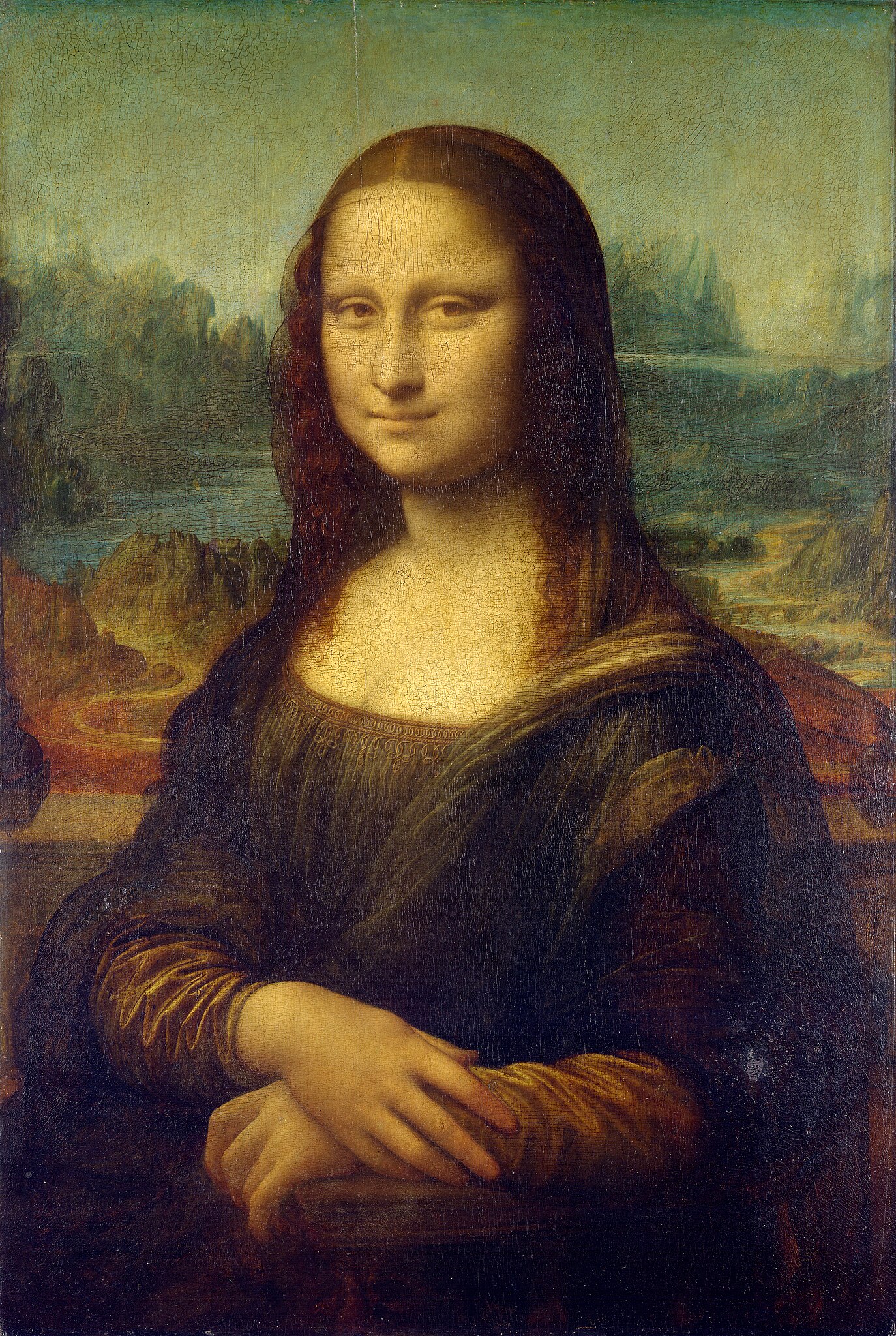
Leonardo Da Vinci, “Mona Lisa” (1503)
“Mona Lisa” is an unparalleled masterpiece that has achieved iconic status in the world of art. Commissioned by Florentine merchant Francesco del Giocondo, the painting is believed to portray Lisa Gherardini, his wife. What sets the "Mona Lisa" apart is the subject's enigmatic smile, captivating gaze, and the artist's meticulous attention to detail. Leonardo's innovative techniques, such as sfumato – a gradual blending of colors and his mastery of chiaroscuro, the subtle play of light and shadow contribute to the painting's timeless allure. The landscape in the background, characterized by winding rivers and distant mountains, adds depth and mystery to the composition. The "Mona Lisa" has transcended its original purpose as a portrait, becoming a symbol of artistic achievement and enigma. The subject's elusive expression and the painting's overall enigmatic quality have sparked numerous interpretations and theories throughout the centuries.
-
Pieter Bruegel the Elder, “The Harvesters” (1565)
.jpg)
Pieter Bruegel The Elder, “The Harvesters” (1565)
It is a captivating painting that offers a rich glimpse into the 16th-century Flemish countryside. Created in 1565, this masterpiece is part of a series depicting the seasons, showcasing Bruegel's extraordinary ability to capture the intricacies of daily life. In "The Harvesters," Bruegel presents a panoramic scene of peasants toiling in the fields during the summer harvest. The meticulous attention to detail reveals the artist's keen observation of rural life, portraying activities such as harvesting, resting, and communal meals. The expansive landscape, bathed in warm sunlight, adds a sense of serenity to the bustling agricultural scene. What distinguishes Bruegel's work is his commitment to realism and his ability to infuse ordinary scenes with profound meaning. “The Harvesters” is not merely a snapshot of a specific moment but a reflection on the human experience, capturing the essence of labor, community, and the interconnectedness of people with the natural world. As viewers engage with the painting, they step into Bruegel's evocative portrayal of a bygone era, experiencing the beauty and simplicity of daily life in the Flemish countryside.
-
Diego Rodríguez de Silva y Velázquez, “Las Meninas, or The Family of King Philip IV” (1656)

Diego Rodríguez De Silva Y Velázquez, “Las Meninas, Or The Family Of King Philip Iv” (1656)
“Las Meninas, or The Family of King Philip IV” is a masterpiece that stands as one of the most iconic and enigmatic paintings in Western art. Created in 1656, the painting offers a unique and complex composition that challenges traditional notions of portraiture. In “Las Meninas”, Velázquez places himself in the scene, creating a self-portrait within the larger canvas. The focal point, however, is Infanta Margarita, the young daughter of King Philip IV, surrounded by her ladies-in-waiting, dwarfs, and a dog. The composition is marked by its intricate use of light and shadow, creating a sense of depth and realism that is characteristic of Velázquez's style. One of the most intriguing aspects of “Las Meninas” is the play between reality and illusion. Velázquez's decision to include himself in the painting, along with the reflection of King Philip IV and Queen Mariana in a mirror at the back, raises questions about the nature of representation and the artist's role in depicting reality.
But are the people in Las Meninas (who are all gazing at something outside the frame) looking at us or staring at themselves?
-
Johannes Vermeer, “Girl with a Pearl Earring” (1665)
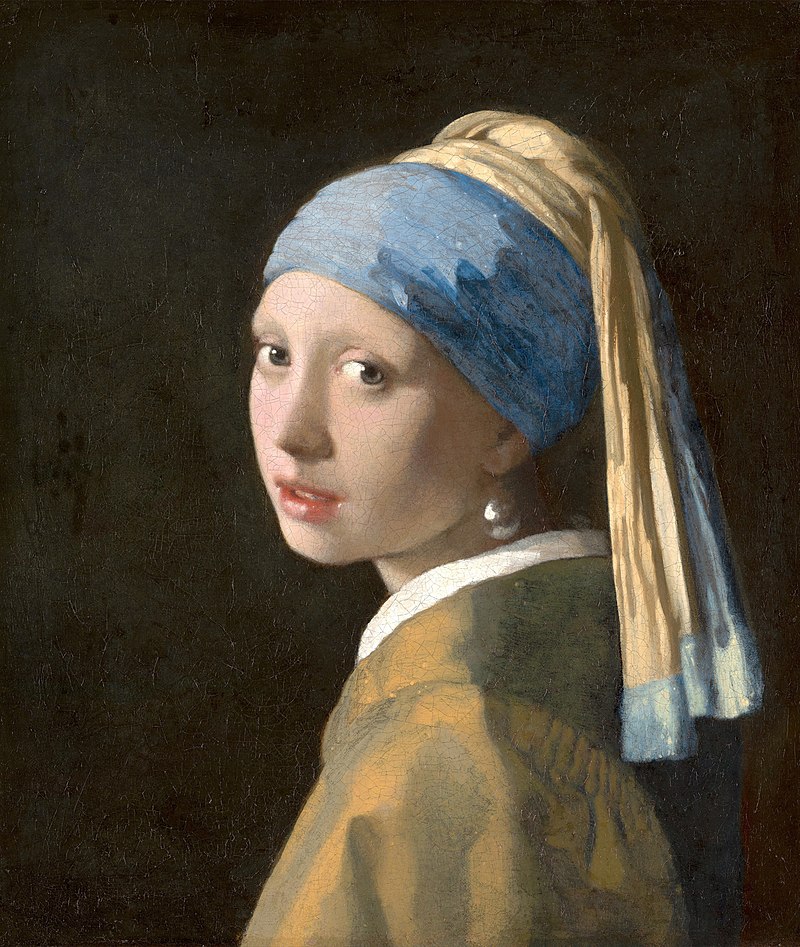
Johannes Vermeer, “Girl With A Pearl Earring” (1665)
This painting is a captivating masterpiece that epitomizes the Dutch Golden Age of painting. This iconic work, often referred to as the “Mona Lisa of the North”, showcases Vermeer's exceptional talent for capturing light and rendering textures with exquisite precision. The painting features a young woman, her gaze enigmatic and captivating, adorned with a turban and a luminous pearl earring. Vermeer's mastery is evident in the meticulous details of the girl's face, the subtle play of light on her skin, and the velvety richness of her attire. The dark background accentuates the ethereal quality of the subject, drawing the viewer's attention to the enigmatic expression and the shimmering pearl. The girl's direct gaze creates a profound connection between the viewer and the subject, inviting speculation about her identity and the narrative behind the painting. Vermeer's ability to evoke a sense of mystery and capture a fleeting moment in time contributes to the enduring fascination with this portrait.
-
Francisco de Goya y Lucientes, “The Naked Maja” (1797–1800)
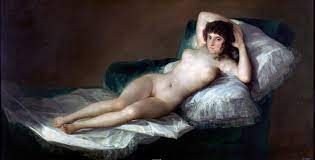
Francisco De Goya Y Lucientes, “The Naked Maja” (1797–1800)
“The Naked Maja” is famous for its provocative and unconventional portrayal of a female nude, challenging societal norms of the time. The controversy it stirred, drawing the attention of the Spanish Inquisition, and its commission by Spain’s Prime Minister, Manuel de Godoy, contribute to its lasting notoriety in the art world. The inclusion of explicit details, such as pubic hair, and the mysterious identity of the sitter further contribute to the painting's historical significance and global renown. Thus, it stands as a testament to Goya's defiance of societal expectations and his willingness to push the boundaries of artistic expression, leaving an indelible mark on the history of Western art.
-
Jean Auguste Dominique Ingres, “Grande Odalisque” (1814)
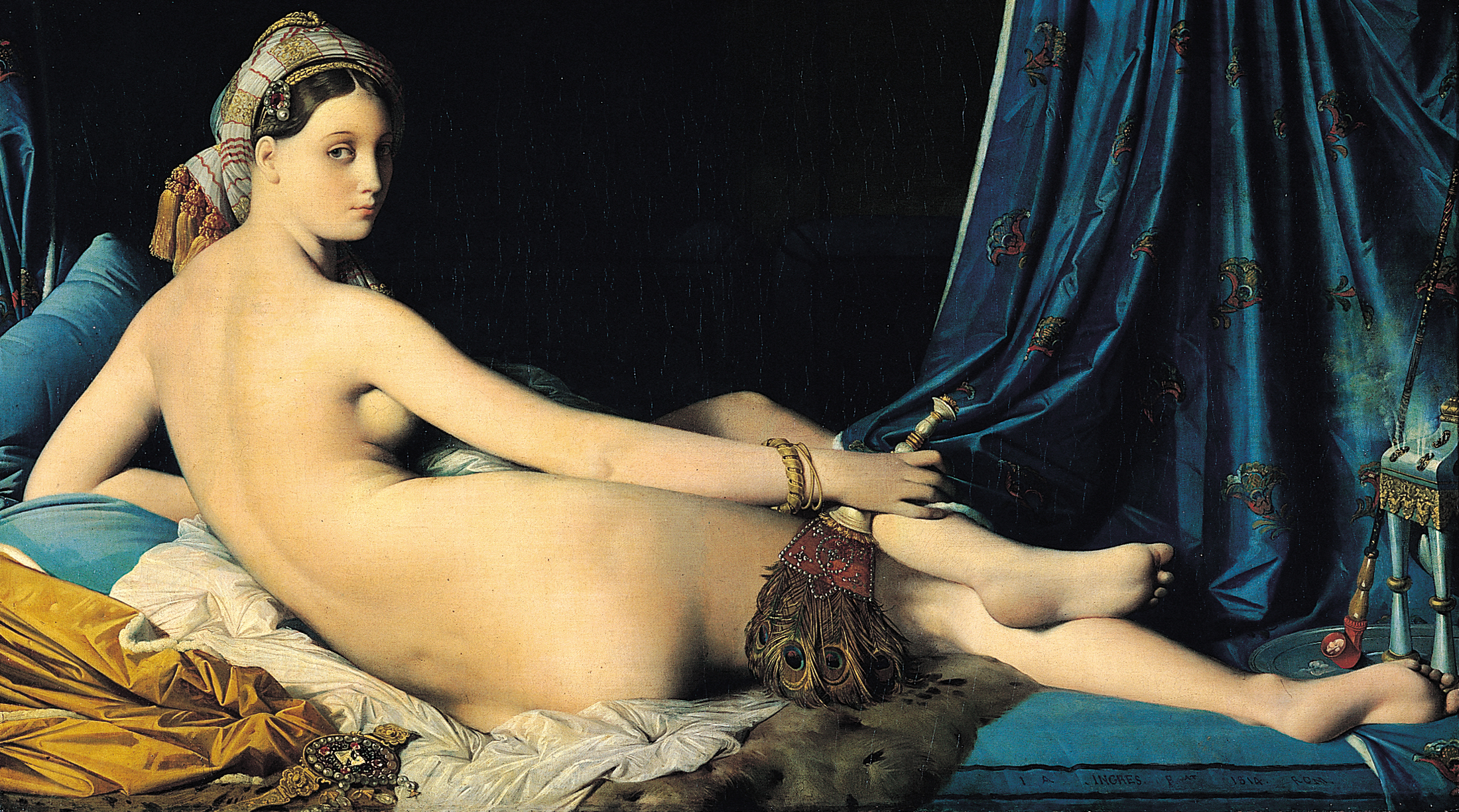
Jean Auguste Dominique Ingres, “Grande Odalisque” (1814)
A key work that marks Ingres' break from the Neo-classical aesthetic that characterized much of his early career is "Grande Odalisque," which was commissioned by Queen Caroline Murat of Naples. Regarded as a Mannerist piece or a transitional step toward Romanticism, the painting breaks away from Neo-classicism's precision and formality in pursuit of evoking emotional responses from viewers. The composition features a concubine in a languid pose on a couch, notable for her elongated and anatomically unconventional proportions. While initially met with criticism from contemporaneous critics who deemed it anatomically incorrect, the painting has endured as one of Ingres' most captivating works. The painting's departure from the strictures of Neo-classicism and its ability to elicit emotional reactions contribute to its lasting popularity, as it continues to be admired for its unique blend of sensuality, exoticism, and artistic innovation.
-
Théodore Géricault, “The Raft of the Medusa” (1818–1819)

Théodore Géricault, “The Raft Of The Medusa” (1818–1819)
Théodore Géricault's painting stands as a magnum opus of French Romanticism, commissioned to depict the tragic aftermath of the shipwreck of the French frigate Medusa in 1816. Géricault, driven by a sense of social justice and a desire to shed light on the plight of the survivors, embarked on an extensive research journey. The artwork captures the raw and desperate struggle for survival of the shipwrecked individuals stranded on a makeshift raft in the vast Atlantic Ocean. Géricault's attention to detail is exemplified in the meticulously rendered expressions, postures, and physical conditions of the figures, showcasing a keen understanding of anatomy and a commitment to authenticity. The painting ignited controversy and captivated audiences upon its debut at the 1819 Salon in Paris. Géricault's innovative approach to composition, dramatic use of light and shadow (chiaroscuro), and the stark realism with which he depicted the human condition marked a departure from the prevailing Neoclassical style. In addition to being an incredible work of visual art, “The Raft of the Medusa” continues to express social and political commentary.
-
Caspar David Friedrich, “Wanderer above the Sea of Fog” (1819)
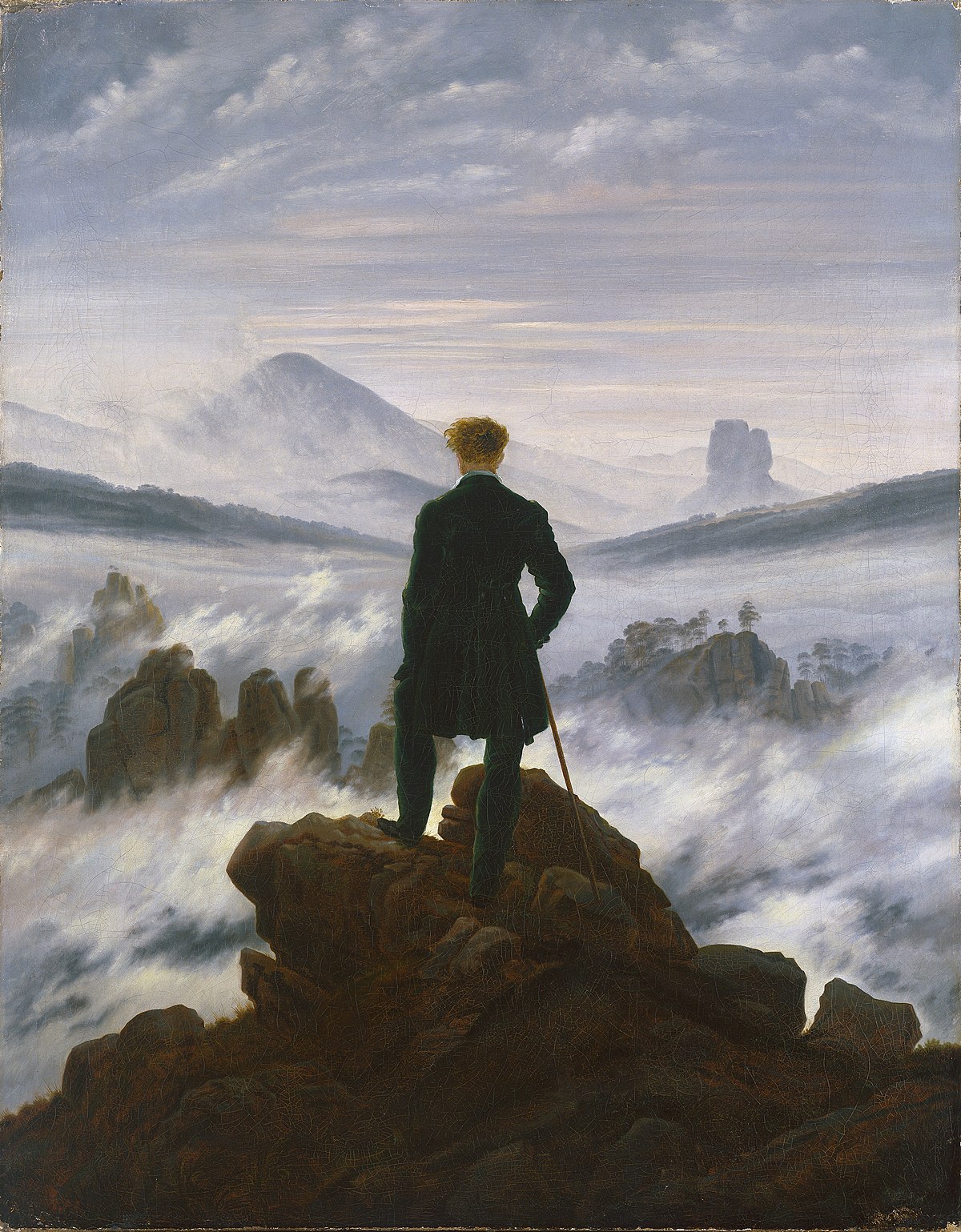
Caspar David Friedrich, “Wanderer Above The Sea Of Fog” (1819)
Caspar David Friedrich's epitomizes the Romantic fascination with nature, capturing the profound sense of awe it evoked. The Romantic emphasis on the emotional response to nature is vividly conveyed as the hiker, with his back turned to the viewer, stands in a posture of deep contemplation. Friedrich masterfully employs the technique of sublimity, drawing viewers into the immersive experience of the landscape. The hiker's over-the-shoulder view invites us to share in the breathtaking vista, fostering a sense of connection with the sublime grandeur of the scene. The painting serves as a visual meditation on the transcendent and the insignificance of the individual in the face of nature's vastness. Friedrich's meticulous attention to detail, atmospheric effects, and the symbolism of the solitary figure collectively contribute to the enduring impact of “Wanderer above the Sea of Fog” as an iconic representation of the Romantic spirit in art.
-
Eugène Delacroix, “Liberty Leading the People” (1830)

Eugène Delacroix, “Liberty Leading The People” (1830)
Eugène Delacroix's paining is a triumphant masterpiece that captures the spirit of the July Revolution in France. Symbolizing the pursuit of liberty, the painting features a central allegorical figure of Liberty personified as a female leading a diverse and impassioned group of revolutionaries forward. Delacroix's composition is marked by its dynamic and energetic depiction of the revolutionary fervor. Liberty is portrayed carrying the tricolor flag, a potent symbol of the French Republic, while the diverse group of individuals behind her includes workers, students, and soldiers. The painting serves as both a historical document and a timeless symbol of the fight for freedom and justice. Delacroix's innovative approach to capturing the human spirit in the midst of political upheaval has secured “Liberty Leading the People” a lasting place in the canon of revolutionary art, where it stands as a powerful representation of the enduring quest for liberty and equality.
-
Édouard Manet, “Le Déjeuner sur l’herbe” (1863)
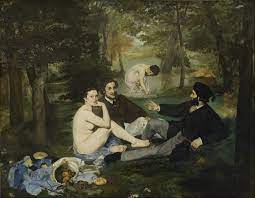
Édouard Manet, “Le Déjeuner Sur L’herbe” (1863)
A groundbreaking piece that shook the accepted standards of 19th-century French art is Édouard Manet's “Le Déjeuner sur l'herbe”. Depicting a provocative scene of a nude woman picnicking with two fully clothed men in a pastoral setting, the painting stirred controversy and marked a departure from traditional representations of the female form. Manet's innovative approach is evident in his rejection of academic norms, both in subject matter and technique. The composition, with its stark contrasts between the nude woman and the clothed men, subverts established hierarchies. “Le Déjeuner sur l’herbe” challenged societal expectations and provoked a scandal at the Salon des Refusés in 1863, where it was exhibited. The painting is considered a precursor to the Impressionist movement, as Manet's unconventional style and subject matter paved the way for a new era in art. Beyond its initial controversy, the painting has become an enduring symbol of modernity, influencing subsequent generations of artists.
-
James Abbott McNeill Whistler, “Arrangement in Grey and Black No. 1” (1871)

James Abbott Mcneill Whistler, “Arrangement In Grey And Black No. 1” (1871)
A restrained color scheme and a careful focus on form and composition define James Abbott McNeill Whistler's picture, popularly known as “Whistler's Mother”, which showcases his unique approach to portraiture. Celebrated for its simplicity and timeless quality, “Arrangement in Grey and Black No. 1” goes beyond artistic significance, becoming a cultural emblem representing maternal love and strength. The careful arrangement of elements, prioritization of form over narrative, and nuanced use of color collectively contribute to the enduring appeal of this portrait, securing its position as a revered masterpiece in the history of portraiture.
-
Claude Monet, “Impression, Sunrise” (1874)
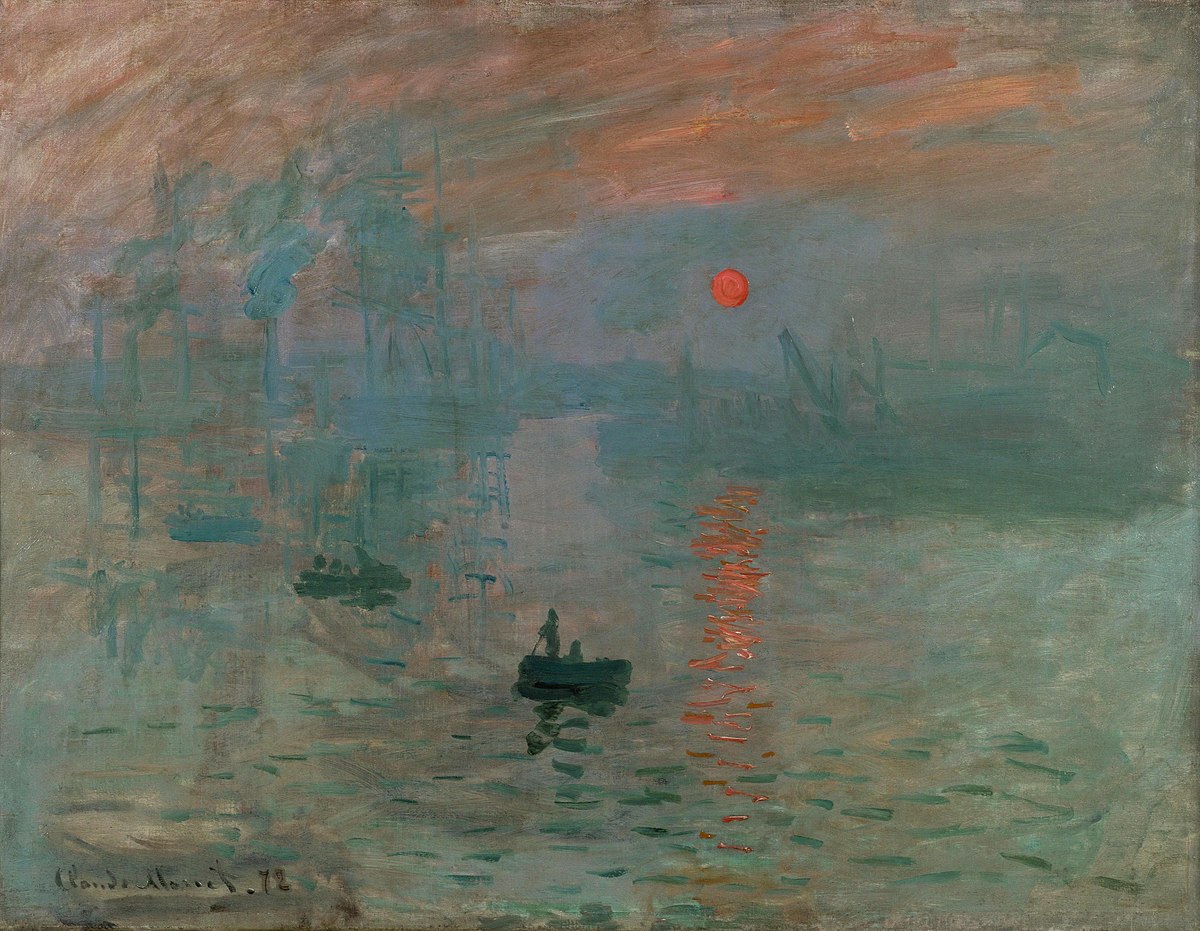
Claude Monet, “Impression, Sunrise” (1874)
Claude Monet's “Impression, Sunrise” is a groundbreaking masterpiece that played a pivotal role in defining the Impressionist movement. Depicting daybreak over the port of Le Havre, Monet's hometown, the painting is considered the embodiment of the Impressionist style and even lent its name to the entire movement. Monet's focus on capturing the ephemeral qualities of light and color is evident in the canvas, where swift and dynamic brushstrokes depict the sun as a vibrant orange orb emerging from a misty, atmospheric fusion of blue water and sky. The painting's title itself underscores Monet's emphasis on capturing the fleeting impressions of a scene rather than rendering precise details. “Impression, Sunrise” not only marked a radical departure from traditional artistic conventions but also laid the foundation for a new way of perceiving and expressing the visual world. The influence of this iconic artwork extends beyond its historical significance, as it continues to captivate audiences with its evocative portrayal of light, color, and the essence of a moment.
-
Georges Seurat, “A Sunday Afternoon on the Island of La Grande Jatte” (1884–1886)
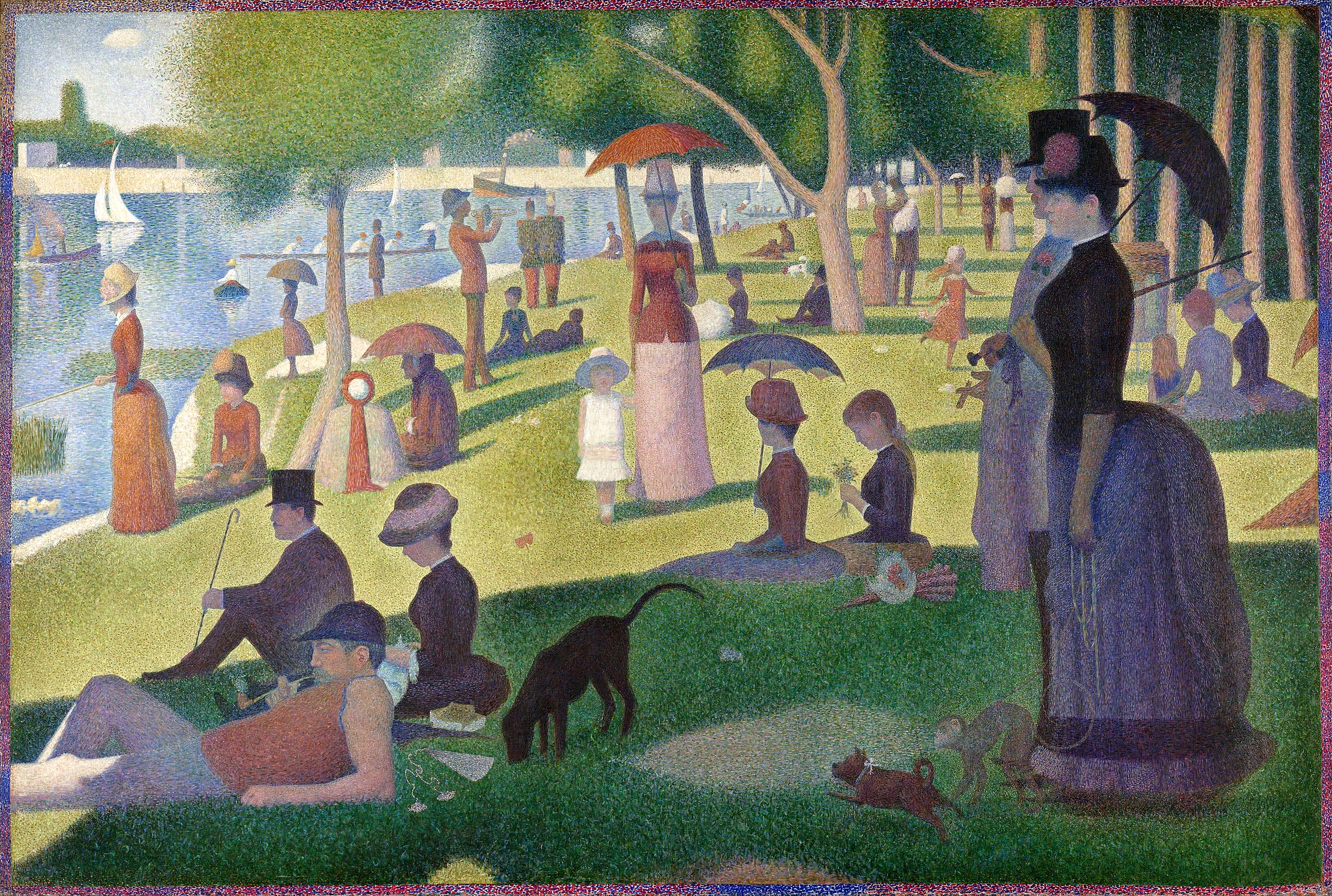
Georges Seurat, “A Sunday Afternoon On The Island Of La Grande Jatte” (1884–1886)
Even though Georges Seurat depicted a working-class suburban landscape outside of the city center, his painting nonetheless stands as a superb representation of Paris during the Belle Epoque. In a departure from the bourgeois themes favored by his Impressionist peers, Seurat chose to depict the everyday lives of the working class, showcasing his commitment to a different artistic vision. Seurat's groundbreaking technique, known as pointillism or Divisionism, involves the use of tiny dots of color that, when viewed from a distance, blend together to form a harmonious and vibrant whole. The meticulous application of this method in “A Sunday Afternoon on the Island of La Grande Jatte” contributes to its iconic status, as it encapsulates not only a specific moment but also the enduring spirit of a bygone era in an innovative and timeless artistic form.
-
Vincent van Gogh, “The Starry Night” (1889)
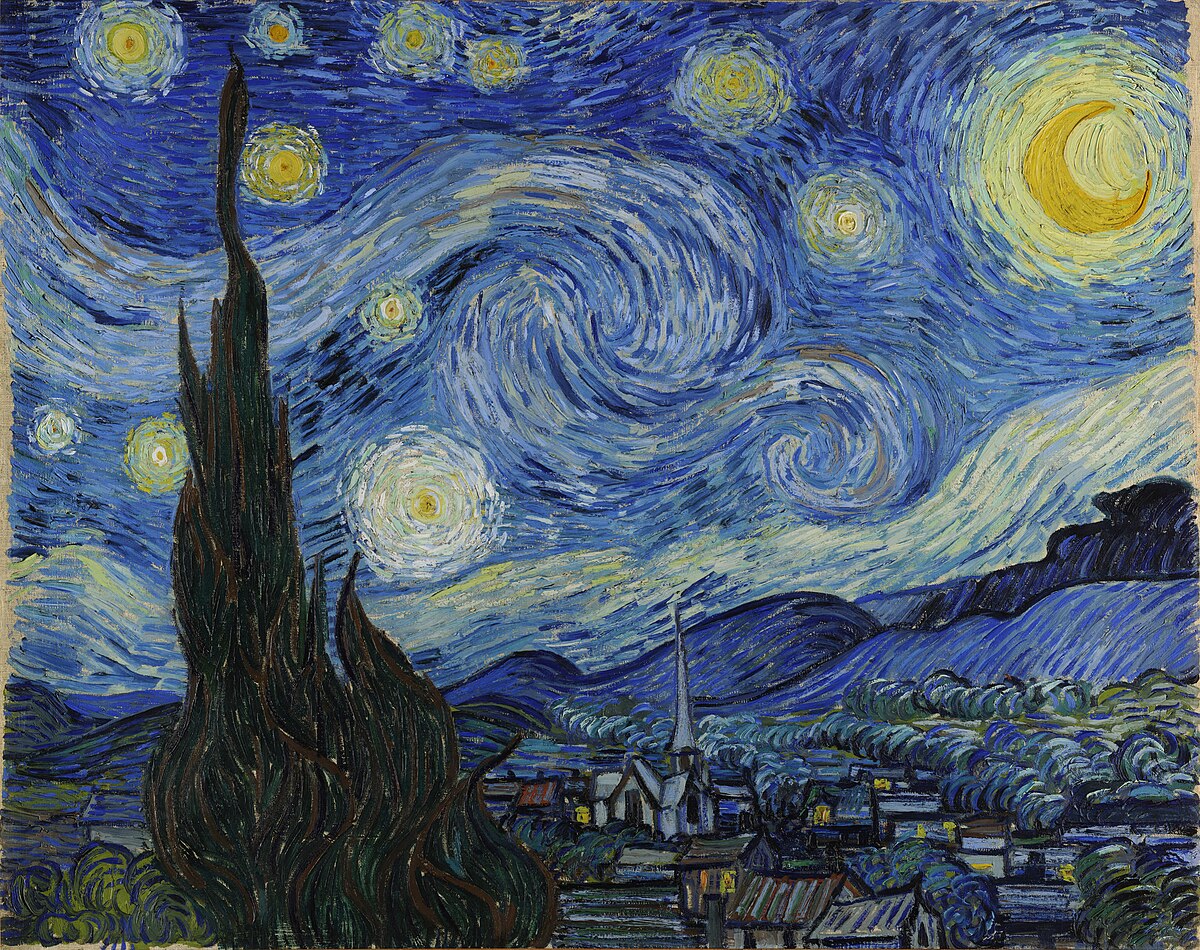
Vincent Van Gogh, “The Starry Night” (1889)
Vincent van Gogh's “The Starry Night” is an iconic masterpiece that captures the essence of the artist's emotional intensity and unique visual language. Painted in 1889 during his stay at the Saint-Paul-de-Mausole asylum, this nocturnal landscape depicts a swirling night sky above a tranquil village. “The Starry Night” is more than a mere representation of a night sky; it reflects van Gogh's inner emotional turmoil and his profound connection to nature. The swirling patterns in the sky convey a sense of cosmic energy and spiritual depth, while the village beneath represents a quiet refuge amidst the cosmic chaos. Van Gogh's distinctive style, characterized by thick impasto and vibrant colors, makes “The Starry Night” instantly recognizable. The painting's enduring appeal lies in its ability to evoke both a cosmic grandeur and an intimate, emotional resonance. It stands as a testament to van Gogh's artistic genius and his capacity to translate his inner emotions onto canvas, creating a timeless masterpiece that continues to captivate and inspire viewers around the world.
-
Edvard Munch, “The Scream” (1893)

Edvard Munch, “The Scream” (1893)
Edvard Munch's masterpiece emerges as an enduring symbol of existential torment and the intricacies of the human psyche. Crafted during a tumultuous juncture in the artist's life, this painting encapsulates a visceral scream echoing through an otherworldly landscape. Delving into the enigmatic creation process of “The Scream”, one finds that Munch drew inspiration from a personal experience during a nature walk, where he felt an unsettling presence in the surroundings. The bold use of color and distorted forms in the painting serves as a visual representation of Munch's inner turmoil and emotional turbulence during that period. As viewers gaze upon the haunting figure against the vibrant backdrop, they are not merely witnessing a painting but unraveling the mysteries of Munch's intense vision and reflecting on the timeless universality of human anxiety conveyed in this iconic artwork.
-
Pablo Picasso, “Les Demoiselles d’Avignon” (1907)
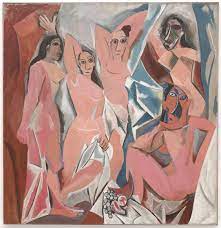
Pablo Picasso, “Les Demoiselles D’avignon” (1907)
The 1907 painting “Les Demoiselles d'Avignon” is a foundational piece that heralded the arrival of 20th-century art. Departing from traditional Western painting, Picasso incorporated influences from African masks, inspired by visits to Paris's ethnographic museum. The painting's compositional DNA includes nods to contemporary trends and a tribute to El Greco's “The Vision of Saint John”. Unveiling the women as prostitutes in a Barcelona brothel, the work serves as a societal critique, challenging established notions of beauty. The figures, deliberately confrontational and distorted, reflect Picasso's audacious exploration of form. “Les Demoiselles d'Avignon” stands as a visual manifesto for the transformative power of avant-garde thinking, forever altering the trajectory of modern art.
-
Gustav Klimt, “The Kiss” (1907–1908)
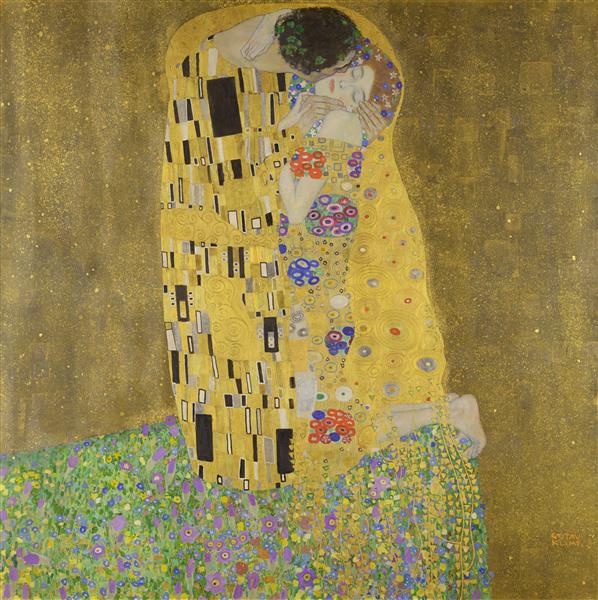
Gustav Klimt, “The Kiss” (1907–1908)
Gustav Klimt's “The Kiss” is an iconic masterpiece that exemplifies the Art Nouveau movement and Klimt's distinctive style. This enchanting painting portrays a couple locked in a tender embrace against a backdrop of golden decorative patterns, symbolizing the fusion of art and love. The elaborate use of gold leaf, intricate patterns, and symbolic elements characterizes Klimt's signature style in “The Kiss”. The male figure is adorned with geometric shapes and swirls, while the female figure is enveloped in a golden floral robe, creating a harmonious and ornate composition. The embracing couple stands within a meadow of flowers, suggesting a connection to nature and the divine. The intertwining of the figures and the opulent gold accents evoke a sense of unity and transcendence, reflecting the ideals of beauty and love prevalent in the Art Nouveau movement. “The Kiss” is not only a celebration of romantic love but also a manifestation of Klimt's exploration of the divine and the eternal. The painting's intricate details and symbolic richness invite viewers to delve into the depths of its meaning, making it a timeless and celebrated work in the history of art.
-
Marcel Duchamp, “Nude Descending a Staircase, No. 2” (1912)

Marcel Duchamp, “Nude Descending A Staircase, No. 2” (1912)
Marcel Duchamp's “Nude Descending a Staircase, No. 2” is a revolutionary work that defies traditional representations of the human form. The painting, often associated with the Cubist movement, portrays the figure of a nude woman in a series of overlapping, fragmented planes, capturing the motion of her descent down a staircase. Duchamp's groundbreaking approach to depicting movement and form challenges conventional artistic norms.The fragmented and abstracted presentation of the nude figure signifies a departure from the traditional ideals of representational art, pushing the boundaries of perception and inviting viewers to engage with the painting on a conceptual level. The painting demonstrates Duchamp's avant-garde attitude and his readiness to question accepted conventions in the art world. Not only is “Nude Descending a Staircase, No. 2” a painting, but it is also an important work of art that changed the course of modern art history, inspiring other movements and strengthening Duchamp's position as an early example of conceptual and experimental art.
-
Piet Mondrian, “Composition with Red Blue and Yellow” (1930)

Piet Mondrian, “Composition With Red Blue And Yellow” (1930)
Piet Mondrian's “Composition with Red, Blue, and Yellow” is a quintessential work of abstract art that exemplifies the principles of Neoplasticism, also known as De Stijl. Created during a period when Mondrian was refining his artistic philosophy, this painting encapsulates his commitment to simplicity, geometric precision, and the use of primary colors. Mondrian's choice of colors and their specific placement adheres to his belief that art should strive for universal harmony and express a sense of spiritual order. The painting exudes a sense of balance and clarity, inviting viewers to appreciate the beauty found in geometric precision and the interplay of primary colors. The meticulous arrangement of lines and colors in "Composition with Red, Blue, and Yellow" reflects Mondrian's commitment to the ideals of De Stijl, influencing subsequent movements in abstract and minimalist art. The painting remains a timeless embodiment of Mondrian's vision of achieving a greater visual and spiritual harmony through the reduction of form and color to their purest essence.
-
Pablo Picasso, “Guernica” (1937)
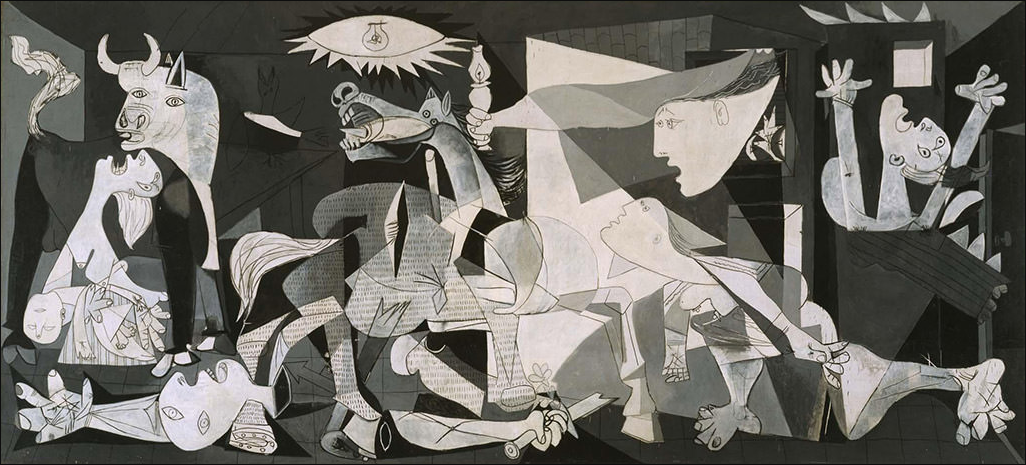
Pablo Picasso, “Guernica” (1937)
Pablo Picasso's “Guernica”, stands as a powerful testament to the horrors of Spanish Civil War and the enduring impact of human suffering. Commissioned for the Spanish Pavilion at the 1937 International Exposition in Paris, the painting portrays the aftermath of the bombing of the town of Guernica during the Spanish Civil War. "Guernica" is a monumental canvas, measuring over 25 feet wide, and it is characterized by its stark monochromatic palette of black, white, and gray. Picasso's fragmented and Cubist-inspired composition adds to the sense of disarray and despair. The central focus of the painting is a horse and a bull, both writhing in agony. A woman holding a dead child and a dismembered soldier further emphasize the devastating impact of war on civilians. The symbolism in “Guernica” is both poignant and universal, capturing the collective anguish and horror of conflict. Picasso's artistic response to the bombing of Guernica has transcended its historical context, becoming a timeless anti-war symbol. The painting's stark emotional intensity and expressive power have made it a seminal work of 20th-century art, compelling viewers to confront the human cost of violence and the enduring plea for peace.
-
Edward Hopper, “Nighthawks” (1942)
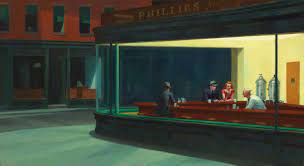
Edward Hopper, “Nighthawks” (1942)
This iconic painting encapsulates the mood of urban isolation and the quietude of late-night city life during the mid-20th century. Rendered with Hopper's signature precision and use of light, the scene portrays a diner bathed in artificial illumination, with three patrons and a solitary server. “Nighthawks” is renowned for its evocative atmosphere and the sense of loneliness it conveys. The customers, seated at the bar or in lonely booths, seem to be deep in concentration, creating a meditative atmosphere. The expansive glass windows, which dominate the composition, provide a glimpse into the empty streets outside, emphasizing the desolation of the nocturnal urban landscape. The painting has been interpreted as a meditation on urban alienation, capturing a moment frozen in time where the night becomes a metaphor for the isolation inherent in modern existence. Hopper's masterful composition and atmospheric portrayal have secured the painting's status as an enduring symbol of the complexity of human connection and the solitude that pervades the modern cityscape.
No Comments Yet...